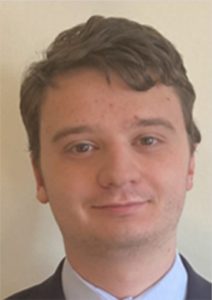May Section Meeting
04 April, 2022
STUDENT SENIOR DESIGN PROJECT PRESENTATIONS
UC & Miami Students
DATE: Thursday May 5, 2022
PLACE : Virtual Event
TIME : 7 p.m- 8:30 p.m. Presentation
COST: Free. A Zoom Link with be issued with registration
The school year has been different for everyone this year, including for UC and Miami. This year’s presentation had to be a little late, but it’s here. Please join us for the virtual presentations.
Projects from Miami University.
- “Implementing Arduino Toolflow on RISC-V Soft Processor” Huan Le, Nathan Martin, and Yicheng Qian (advisor: Dr. Peter Jamieson)
- “Solar Charger” Bradley Snyder, Mike Wilson, and Gemma Fazekas, (advisor: Dr. Mark Scott)
Projects from The University of Cincinnati
An Electronic Input System for Saltwater Animal Enclosures
- Team Members: Chris Dombrosky, Brandon Carroll, Nathaniel Collum, Hayden Lampert
- Advisor: Dr. Dieter Vanderelst
- Abstract: In this project, we designed a prototype input collection system for use in interactive electronic systems in saltwater animal enclosures. Increasing interactivity in enclosures has the potential to improve animal welfare and allow for research and behavior monitoring. Implementing an input device underwater is made difficult by the lack of premade input devices that function underwater, waterproofing requirements, and the ineffectiveness of wireless communication methods underwater. To address these challenges, we designed a prototype input system that includes a custom submersible pushbutton, fiber optic communication, wirelessly rechargeable battery, and extensive waterproofing features. This prototype functions as a pushbutton that can be installed underwater and connected to an Arduino through a fiber optic cable. It provides a tactile input for animals while maintaining safety by not exposing wires or electronics to water. Although it only functions as a pushbutton in its current state, this prototype was designed to be easy to use and easy to add additional sensors or input devices to. Overall, it meets the basic needs presented by our advisors while also making future work and improvements easier.
Nerf Automated Defense System
- Team Members: Austen Brownfield, Andrew Dygert, Fred Jenks, Jared Musser
- Advisor: Dr. Xuefu Zhou
- Abstract: Personal security is a major issue during these times. Individuals shouldn’t need to worry about the safety of their personal belongings while he or she isn’t there to ensure their safety. Our team has decided to pursue the research and development of a project that seeks to remedy this issue: an automated nerf gun that fires at trespassers. No longer will people be worried about the safety of their belongings when this device is in use. While this device is on and in a room, should a trespasser be detected, the nerf gun will fire at them. The sudden confusion and fear of being shot at by a nerf gun will scare away any unwanted guests
Real-Time 2D Game Combat Simulation
- Team Members: William Breen, Trevor Hillard, Anna Lanzillotta
- Faculty Advisor: Dr. Zachariah Fuchs
- Abstract
- : Unmanned Aerial Vehicles (UAVs) are becoming more common in aircraft combat. UAVs are controlled with
 autonomous control strategies which are trained to compete against other UAVs and manned aerial vehicles. Dr. Fuchs’ research group has developed several autonomous control strategies for multi-agent scenarios such as dog fighting, high-value target defense, surveillance, and pursuit-evasion. The control strategies have previously been tested in simulation. However, it is also necessary to test them in against unpredictable opponents in real-time.
autonomous control strategies which are trained to compete against other UAVs and manned aerial vehicles. Dr. Fuchs’ research group has developed several autonomous control strategies for multi-agent scenarios such as dog fighting, high-value target defense, surveillance, and pursuit-evasion. The control strategies have previously been tested in simulation. However, it is also necessary to test them in against unpredictable opponents in real-time. - The purpose of this project is to develop a two-dimensional simulation environment to test the autonomous controllers in real time against a human player. We developed a physical simulation environment where the human player is represented by a robot and the autonomous control strategy is represented by a projection onto the environment. The autonomously controlled player is only projected when it is within the human player’s detectable radar range. A motion tracker is implemented for precise positioning of the robot in the simulation. The simulation’s combat scenario can be selected by the user. The system will be used by Dr. Fuchs and his research group to visualize the performance of the autonomous control strategies.
tag.AI
- Team members: Jack Cordonnier, Ben Elfner
- Faculty Advisor: Ali Minai
- Abstract: Our project was focused on developing a game of tag as a 2D platformer with specialized chaser and evader AI. The chaser AI attempts to catch the evader using the information provided to it by the neural network. The game simulation will be written in a language conducive to quickly teach the AI through iterative learning. We have utilized neural networks to train and improve our AI’s performance. This project idea is something that pushes the envelope when it comes to video game AI, since AI’s tend to work alone and we are attempting to evolve that into a more collaborative AI approach. This project is a framework for future neural network development since it allows the solving of a varying number of solutions using our application structure.






